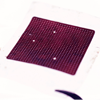
Emphasis:
The emphasis is on the development of medical device hardware, software, and models to improve patient health.
NIBIB interests include but are not limited to:
- implantable bioelectronic stimulators and sensors for monitoring and modulating human physiology
- wearable sensors for monitoring health vitals
- micro devices and injection systems for therapeutic delivery
- anti-bacterial and anti-coagulating coatings for implantable devices
- biohybrid devices for replacing organ function
Related News
Researchers developed a wireless implantable device that can monitor bladder filling and emptying in real time and send data to a smartphone. With further development, this type of device could help monitor recovery after bladder surgery and aid patients who have compromised bladder function. Source: NIH Research Matters
NIBIB is marking the 10-year anniversary of a commercialization program that helps innovators bring their medical devices from the lab to the marketplace.

While pacemakers have treated many patients with heart rhythm disorders, their bulky design and use of wires limits their usefulness and poses a risk of heart damage or infection. Now, researchers have cut the cords, shrunk the size, and expanded the capabilities of current designs.
Researchers at The Pennsylvania State University have developed a new synergistic approach to revascularization that combines a new framework made from granular hydrogels with micropuncture, a surgical technique. Their preclinical method could rapidly grow organized blood vessels in live rats.
Researchers have developed a new catheter-based device that combines two powerful optical techniques to image the dangerous plaques that can build up inside the arteries that supply blood to the heart. By providing new details about plaque, the device could help clinicians and researchers improve treatments for preventing heart attacks and strokes.
Source: Optica Publishing Group

